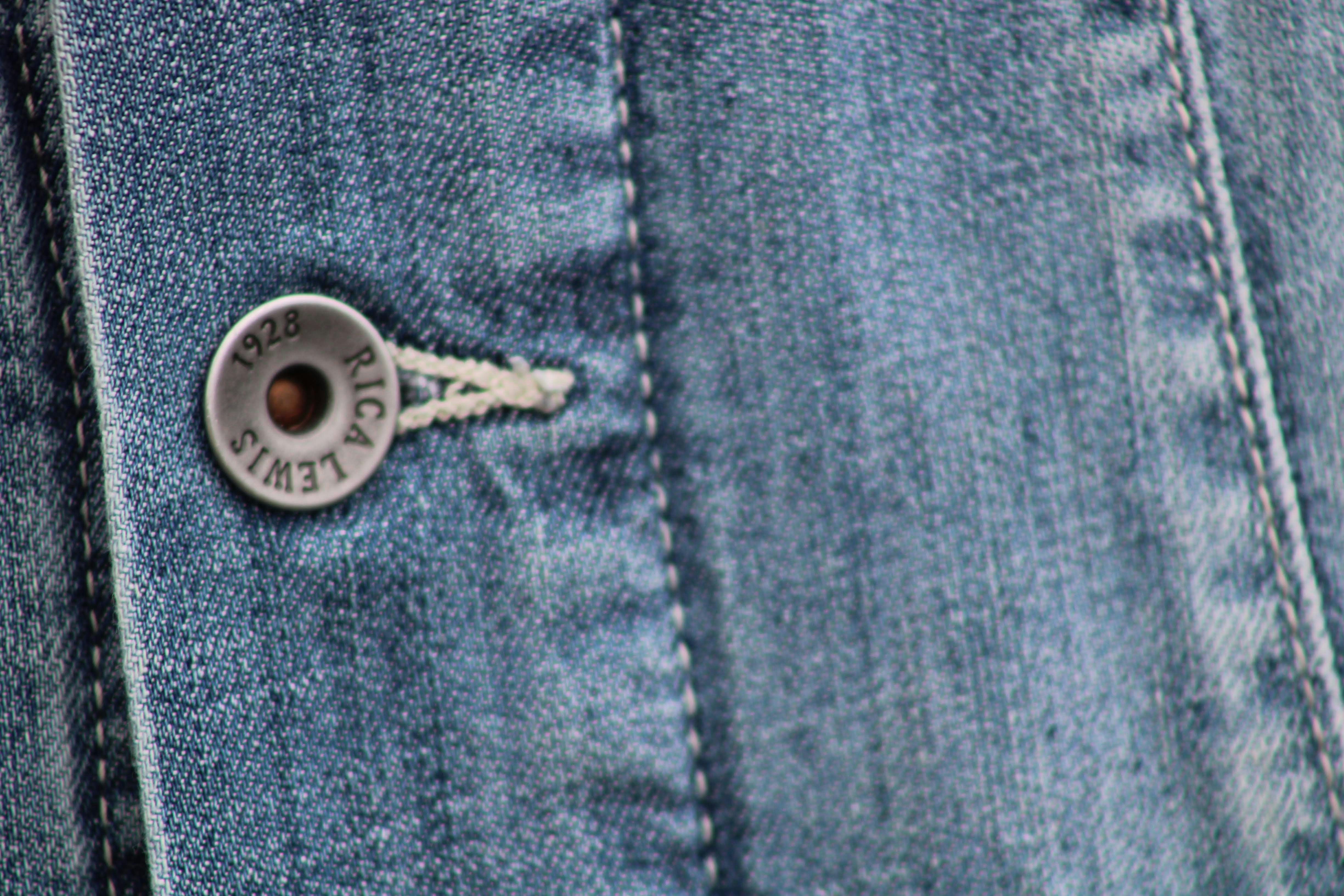
A Brief History of Denim
Denim, a fabric renowned for its durability and versatility, has roots tracing back to the late 17th century in Nîmes, France. The term “denim” originates from the French phrase “serge de Nîmes,” indicating its place of origin. Initially, this sturdy fabric was utilized in workwear, largely favored by laborers due to its resilience against wear. Its distinctive twill weave and robust nature made it a suitable choice for demanding jobs, but it remained relatively obscure outside of work-related contexts until much later.
The transformative journey of denim began in the mid-19th century during the California Gold Rush. As miners sought reliable apparel, they turned to denim, which provided the durability necessary for their arduous tasks. In 1873, the advent of riveted jeans marked a pivotal moment in denim’s history. Levi Strauss and tailor Jacob Davis collaborated to create the first pair of riveted pants, designed to withstand the rigors of labor. This innovation solidified denim as an essential fabric for workwear and laid the foundation for one of the most iconic clothing items in modern fashion.
Over the decades, denim evolved from a practical material into a fashion statement. The 20th century saw denim’s ascent into popular culture, particularly during the post-World War II era, when it was embraced by youth subcultures as a symbol of rebellion and individuality. The association of denim with figures like James Dean and Marlon Brando cemented its place in the American cultural landscape. Various styles emerged, from flared to skinny jeans, reflecting shifting trends and social movements.
Overall, the history of denim is a tale of adaptation and innovation. From its humble beginnings as durable workwear to its established status as a global fashion staple, denim has continually evolved, responding to cultural shifts while maintaining its core identity as a reliable and stylish fabric.
Classic Denim Styles and Their Impact
Denim has firmly established itself as a staple in global fashion, and classic denim styles like the original blue jeans, flared jeans, and denim jackets play a significant role in this timeless narrative. Initially popularized in the late 19th century, blue jeans were designed for laborers, providing durability and functionality. However, their adaptability transformed them into a cultural phenomenon, transcending socioeconomic boundaries and ultimately becoming a symbol of rebellion and individuality.
Flared jeans emerged during the 1960s and captured the essence of the counterculture movement. They became synonymous with the free-spirited attitudes of that era, popularized by notable figures and musical icons. This silhouette not only emphasized freedom of movement but also showcased personal style, influencing fashion trends for generations. The continuance of flared jeans in modern day wardrobes highlights their enduring appeal and versatility.
Another classic denim piece, the denim jacket, has similarly maintained its relevance across various fashion movements. In the 1970s, it became a favorite among punk rockers and rebellious youth, symbolizing defiance against societal norms. Its rugged aesthetic has been embraced by numerous subcultures, from bikers to grunge enthusiasts in the 1990s, illustrating the jacket’s capability to adapt and resonate with differing identities.
The elements contributing to the timeless resonance of classic denim styles include their durability, versatility, and ability to convey personal stories. Whether incorporated into tailored outfits or worn casually, these pieces maintain a constant presence in contemporary wardrobes. In essence, classic denim styles not only reflect evolving fashion sensibilities but also encapsulate cultural movements, solidifying their status as enduring icons in the world of apparel.
The Rise of Sustainable and Innovative Denim
The denim industry is currently undergoing a significant transformation, marked by a focus on sustainability and innovation. Traditional denim manufacturing has been scrutinized for its environmental impact, particularly concerning water usage, chemical treatments, and waste generation. Recognizing these challenges, numerous brands are pivoting towards eco-friendly materials and techniques to mitigate their ecological footprint.
A primary advancement in this realm is the increased use of organic cotton. This material is cultivated without synthetic pesticides and fertilizers, resulting in healthier soil and reduced chemical runoff. Besides, organic cotton farming typically requires less water compared to conventional cotton, addressing a critical concern associated with traditional denim production.
Moreover, significant strides are being made in water-saving technologies. For instance, brands are employing techniques that minimize water consumption during the washing and finishing phases of denim production. Technologies that enable dry processing methods have emerged, drastically reducing the reliance on water while maintaining quality standards. This level of innovation underscores an industry movement towards more responsible production practices.
Another noteworthy development is the integration of recycled denim. Instead of relying solely on new materials, several companies are innovating by using post-consumer waste to create new denim products. This approach not only reduces landfill waste but also reduces the demand for virgin resources, thus conserving energy and minimizing environmental degradation.
As sustainable practices continue to gain traction, consumer preferences are shifting accordingly. Today’s consumers are more conscientious about their purchases, seeking brands that align their values with eco-friendly practices. This growing demand for sustainability is reshaping the future landscape of denim fashion, pushing the industry toward more innovative and responsible practices that cater to environmentally aware consumers.
The Future of Denim: Trends and Predictions
The evolution of denim is an ongoing narrative, consistently adapting to the dynamic landscape of fashion. Currently, trends reveal a significant shift towards customized denim, which allows consumers to express individuality through personalized designs and fits. This burgeoning demand for tailored garments signifies a departure from mass production and reflects a desire for unique fashion statements. Brands are increasingly implementing direct-to-consumer models, further driving the customization trend by enabling buyers to select styles, colors, and even fabric choices.
Moreover, the integration of smart textiles in denim represents a groundbreaking leap forward. Innovations such as moisture-wicking, stain resistance, and even embedded technology are transforming traditional denim into multifunctional apparel. As technology becomes more intertwined with fashion, consumers can expect garments that not only look good but also enhance their everyday experiences, merging fashion with utility. This trend aligns with the broader concept of ‘wearable tech,’ allowing denim to evolve beyond its classic roots.
The influence of streetwear and high fashion collaborations continues to shape contemporary denim styles. As designers merge casual aesthetics with luxurious elements, the boundaries between everyday wear and high couture are increasingly blurred. This democratization of fashion enables denim to remain at the forefront of modern trends, appealing to a wide audience while inspiring fresh interpretations of classic designs.
Social media’s impact on denim trends cannot be overlooked, with platforms promoting viral styles and fostering communities centered around denim culture. This digital dialogue celebrates inclusivity and diversity, challenging traditional sizing norms and encouraging brands to embrace a broader range of body types. The emphasis on representation in marketing campaigns highlights the cultural significance of denim in today’s society, ensuring that everyone finds a place in the denim dialogue.
Looking ahead, the future of denim will likely strike a harmonious balance between tradition and innovation, with brands continuing to honor the heritage of denim while embracing new technologies and cultural shifts. As the fashion industry evolves, denim is poised to remain an iconic and versatile staple.


